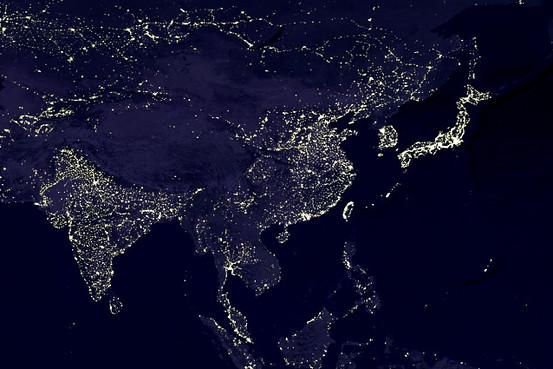 NASA
NASA
Even some top Chinese officials don't seem to trust the economic figures published by local authorities. But what are the alternatives?
Disdaining GDP, many China economy-watchers prefer so-called physical indicators: simple measures like the amount of freight hauled over railroad tracks or how much electricity was sent down power lines. These things should roughly track the overall amount of activity in the economy, the thinking goes.
In that tradition, four researchers at the George Mason University School of Public Policy are trying a novel approach: using satellite images to measure how brightly-lit different areas appear at night.
The degree of night-time illumination in different place does seem to capture something about economic development: Just take a look at the contrast in satellite images between the absolute blackness of impoverished North Korea and the blazing density of China's booming coastal megacities.
In their paper, the four researchers look at whether changes over time in the degree of illumination can serve as an indicator of economic growth in local areas. They crunched data derived from satellite images of the U.S. and China from 1992 to 2003, and then lined them up with the two countries' counties and prefectures.
Does it work? The results for China "turned out to be a very mixed bag," the researchers concede. They looked for a statistical relationship between their measure of "light based growth" and reported economic performance, but couldn t find a very strong one.
The fault, it seems, is in the technology. The satellite sensors that measured the intensity of light max out at a certain level, and so can't distinguish between very high levels of luminosity. That s a problem for China, they write, "where most of the east coast prefectures have seen explosive growth between 1997 and 2003." The satellite sensors simply "cannot capture this growth."





